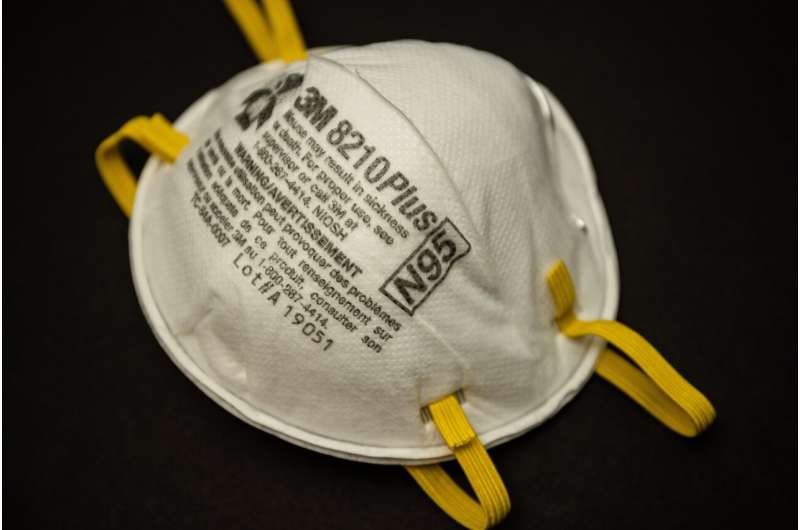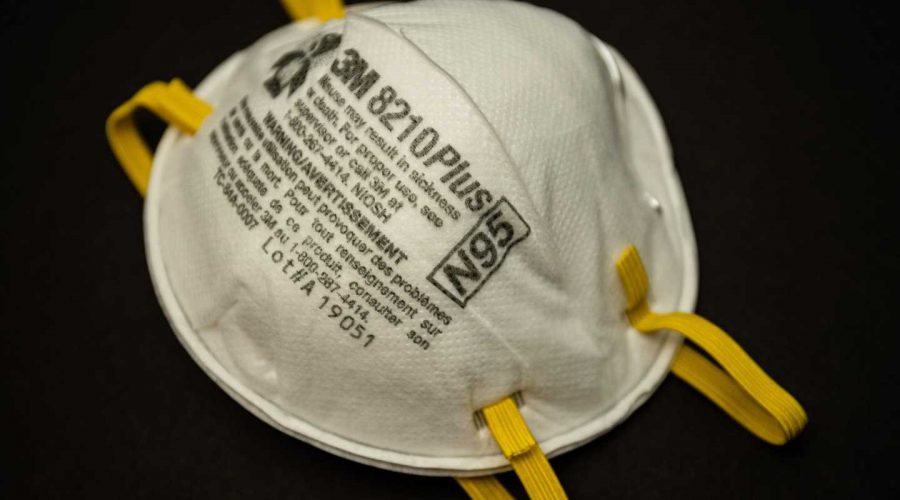Surveys reveal new insights on masks, at-home test kits and misinformation

As the Biden administration moves to contain the latest ravaging wave of COVID-19 by providing Americans with 1 billion COVID-19 self-test kits and 400 million N95 masks for free, new survey data reveal how many are wearing masks, including which types, and how at-home COVID tests are likely leading to undercounts of those contracting the virus.
These data could shed light on how Americans might—or might not—use these forthcoming masks and tests in the fight to stop COVID-19. They also underscore how doctors and nurses see the misinformation spread via social media as the No. 1 source undermining decisions to get vaccines.
The national polls were conducted by the COVID States Project, a consortium of university researchers from Northwestern, Northeastern, Harvard and Rutgers universities.
James Druckman, the Payson S. Wild Professor of Political Science and associate director and fellow of Northwestern’s Institute for Policy Research, breaks down the top finding from each report.
Most see N95 masks as more protective, but only one in five wears one
Data collected between Dec. 22, 2021, and Jan. 10, 2022, from a total of more than 17,000 Americans on mask use finds that two-thirds (66 percent) have correctly understood that N95 masks provide more protection than cloth masks, yet only one in five reports wearing one.
Startlingly, more than one quarter (26 percent) of the more than 2,000 surveyed on recommended masks remain unsure if N95s offer more protection than cloth masks. Overall, 64 percent of all respondents say they still wear cloth masks, as well as gaiters, bandanas and scarves. (Respondents could pick more than one type of mask.) Nine percent say they never wore a mask.
“This lack of accurate information likely reflects a mix of poor communication, confusion on what masks are called, and exhaustion from having to process additional protective measures,” Druckman said.
The researchers found the numbers of Americans wearing masks plunged from a high of 80 percent in winter 2020–21 to a low of 50 percent over summer 2021 after the Centers for Disease Control and Prevention (CDC) declared that wearing a mask was no longer necessary. The rate has nudged up following each wave of a new variant, rising to 56 percent in December 2021 as omicron became dominant.
The data also highlight that many remain confused by the CDC’s messaging on masks.
Of the individuals surveyed on CDC recommendations, most (54 percent) think the CDC recommends N95 masks for all Americans. The survey was taken before the CDC changed its guidance for wearing N95s, KN95s and other more protective masks to a “preferred choice” instead of a “recommendation” on Jan. 14. The CDC continues to recommend cloth masks.
Those who incorrectly believe that the CDC has recommended N95s are more likely to be Democrats (60 percent), high earners (65 percent), vaccinated (59 percent), college educated (58 percent), and white (55 percent). Between 71 percent and 75 percent of these groups and Americans over the age of 65 recognize that N95s offer more protection than cloth masks.
“It will be interesting to see if confusion declines as the administration distributes more masks and works on more consistent messaging,” Druckman said.
Up to 6 percent of adult cases not counted due to use of at-home tests
In another survey of nearly 11,000 respondents conducted between Dec. 27, 2021, and Jan. 15, 2022, the researchers asked about COVID-19 testing and the use of at-home test kits. Of those surveyed,
- 63 percent report they had been tested for COVID-19 either in a testing facility or using an at-home test;
- 18 percent confirm they tested positive for COVID at least once; and
- 4 percent say they tested positive using a rapid antigen test at home
Of the 4 percent who tested positive with rapid at-home test kits, more than one-third disclosed they did not go in for a follow-up test at either their doctor’s office or a testing facility. The researchers estimate that around 6 percent of such cases are missing from official government counts, and that number could continue to grow as at-home testing increases.
“This is a meaningful result insofar as it suggests an undercount of official COVID-19 numbers, which also could mean inaccurate planning that uses projected case counts,” Druckman said.
The demographics of these undercounted adults skew towards those who use at-home tests more—respondents who are younger, richer, college-educated and Democrats.
Download the COVID States Project #79 “At-home COVID tests” report here.
Healthcare workers pinpoint Facebook as a key source of misinformation
Beyond understanding what Americans believe about masks and tests in the COVID era, the data also point to how misinformation continues to fuel the virus’ spread as people make decisions about whether to get vaccinated or to seek care for it.
“It is well understood that COVID-19 misinformation is present in social media,” Druckman said. “Our data suggest this has clear consequences for public health.”
From Nov. 3 to Dec. 3, 2021, the researchers surveyed 545 healthcare workers to understand the role they believe misinformation plays in patients’ healthcare decisions.
A sizable majority say misinformation is a negative influence on patients’ decisions either to get vaccinated (72 percent) or to seek care (71 percent) once they fall ill with COVID. And one-third called such misinformation an “urgent” problem and the single most important factor influencing decisions to not get vaccinated.
When asked about the sources of misinformation, healthcare workers point to social media (73 percent) as the No. 1 source of misinformation, followed by family and friends (64 percent). Only about a third of them identified cable news (33 percent) or local and network news (32 percent) as sources.
Diving into the responses of the 405 who identified social media or apps as sources of misinformation, 84 percent of them overwhelmingly point to Facebook first, with Instagram (48 percent), YouTube (46 percent), Twitter (45 percent) and TikTok (42 percent) rounding out the top five.
Source: Read Full Article
